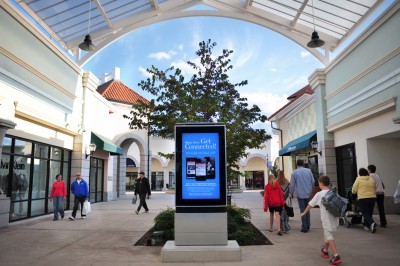LCDs are not all created equal. Some will lose 10 to 12 per cent of their brightness each year. A display that is designed for the direct sun load and can maintain its brightness over time is substantially preferable.
Another concern is ‘solar clearing.’ Under the heat of direct sunlight, the fluid within an LCD can go through a phase change, causing black blotches to appear on the screen or even blot it out entirely. Once the LCD cools down again, its appearance may return to normal. Beyond the temporary visual disruptions, however, solar clearing is a real threat that will reduce the display’s operating life.
Beyond the screen itself, the paint finish should provide protection for the framing unit against harmful ultraviolet (UV) rays over the long term.
Heat and humidity
Some LCDs are specifically rated to operate at temperatures of 20, 27, 43 or 50 C (68, 80, 110 or 122 F). The higher the rating, the better. Embedded electronics, including the media player, data modem and/or router, will need to be rated for the display’s internal temperature.
‘Sealed’ displays are preferable. These will prevent condensation from forming inside the cover glass, as well as keeping out rain, snow, dirt, brake dust, car fumes and other airborne contaminants. They also can be washed down safely when needed.
As mentioned, some LCDs lose brightness over time. Certain models will lose 10 to 15 per cent of their brightness simply due to ambient temperature conditions. So, temperature fluctuations can affect content visibility.
One of the best ways to address the outdoor environment is to attempt to control the display’s temperature as much as possible. There will need to be a plan to heat the display if it will operate in freezing conditions and, similarly, a plan to cool it during extreme heat. Conventional air-conditioning (a/c) systems, unfortunately, will drip condensate water (which could cause condensation to form inside the cover glass), require maintenance for coolants and filters and consume significant power. Fans and alternative methods should be considered instead.
An outdoor digital signage network may also require special startup procedures for hot or cold environments, as powering up at low temperatures is different than at high temperatures.
Considerations relating to sunlight, temperature and humidity may seem overwhelming, but once they have been factored into the procurement and deployment of digital displays and precautions have been taken, the investment will be well-protected.







